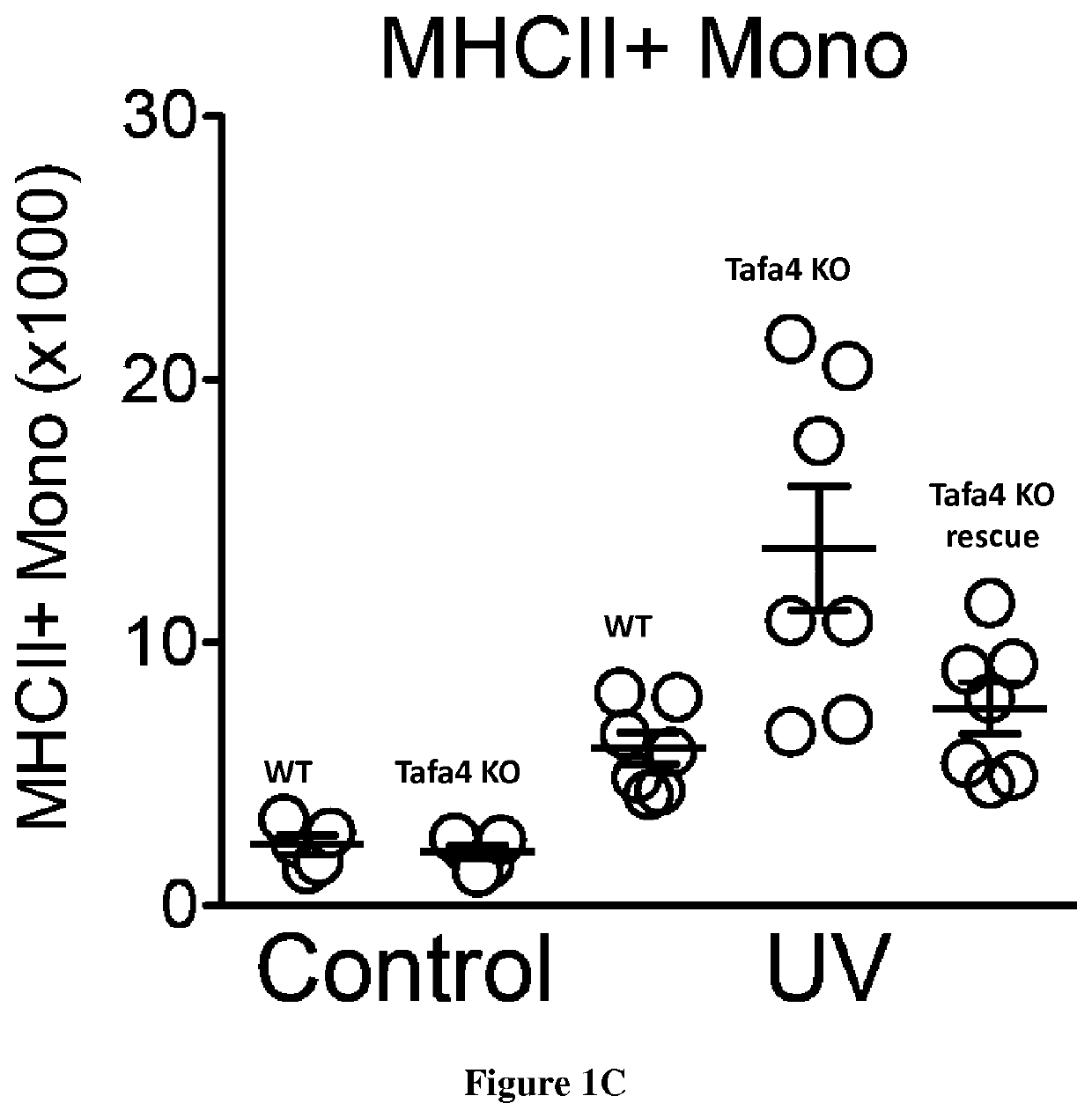Methods and pharmaceutical composition reducing skin inflammation
a technology of pharmaceutical composition and skin inflammation, applied in the direction of drug composition, dermatological disorders, peptide/protein ingredients, etc., can solve the problems of unresolved fibrotic scars, unresolved fibrotic scars, and chronic tissue damage, and achieve the effect of reducing skin inflammation
- Summary
- Abstract
- Description
- Claims
- Application Information
AI Technical Summary
Benefits of technology
Problems solved by technology
Method used
Image
Examples
example
[0038]Material & Methods
[0039]Mice
[0040]Mice were maintained under standard housing conditions with free pathogen, free access to food and water and a 12 h light and dark cycle at an ambiant temperature of 22° C. in the animal facility of the CIML or CIPHE (CIML, France). C57 / Bl6J mice were bought from Janvier (https: / / www.janvier-labs.com) and TAFA4-KO and GINIP-DTR mice were born in our animal house. TAFA-4-KO mice and NaV1.8CRE-GINIP-DTR mice were generated by Aziz Moqrich's team (IBDM, AMU, France) and described previously17,22. CCR2-KO mice were described previously31. Special effort was made to minimize number and stress. All protocols are in agreement with European Union recommendations for animal experimentation. All mice were used between 8 and 12 weeks unless specified.
[0041]Bone Marrow Chimera generation Age and sex matched WT or TAFA4KO mice were anaesthetized with ketamine / xylazine (10 μl / g, 2% Imalgene500 et 5% Rompun). Then mice were lethally irradiated with 6.5 Gy fr...
PUM
| Property | Measurement | Unit |
|---|---|---|
| temperature | aaaaa | aaaaa |
| wavelength | aaaaa | aaaaa |
| thickness | aaaaa | aaaaa |
Abstract
Description
Claims
Application Information
 Login to View More
Login to View More - R&D
- Intellectual Property
- Life Sciences
- Materials
- Tech Scout
- Unparalleled Data Quality
- Higher Quality Content
- 60% Fewer Hallucinations
Browse by: Latest US Patents, China's latest patents, Technical Efficacy Thesaurus, Application Domain, Technology Topic, Popular Technical Reports.
© 2025 PatSnap. All rights reserved.Legal|Privacy policy|Modern Slavery Act Transparency Statement|Sitemap|About US| Contact US: help@patsnap.com


